Egyptian authorities have announced the discovery of another archaeological marvel, this time a Pharaonic tomb dating back to the 13th century B.C., marking the latest of a series of finds that the government hopes to use to stoke interest in the country’s wealth of antiquities and attract more tourists.
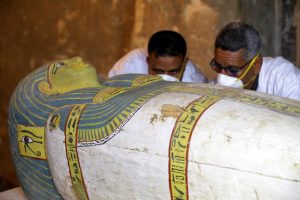
While the recent spate of discoveries pale in comparison to the scale of digs in the last century, they have been interesting enough to earn a place for Egypt in the international media outside the usually grim fare of terror attacks or economic woes.
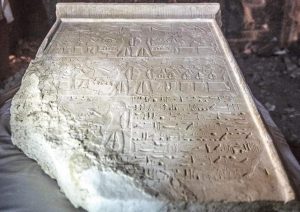
The ancient burial place contains two decorative sarcophagi, or coffins, along with some 1,000 funerary statuettes and other objects like coloured wooden masks and papyrus on which parts of the ancient Egyptian “Book of the Dead” were inscribed. The discovery of the tomb was announced in a ceremony in front of the temple of Queen Hatshepsu over the weekend in the southern Egyptian city of Luxor by Antiquities Minister Khaled el Anani.
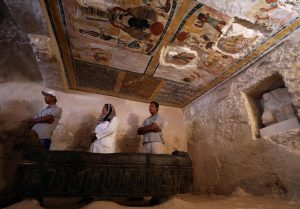
The two coffins contained mummies in a perfect condition, according to the minister.
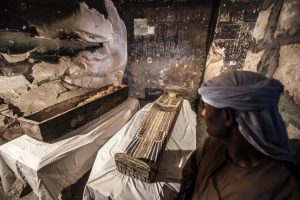
“One sarcophagus was rishi-style, which dates back to the 17th dynasty, while the other sarcophagus was from the 18th dynasty,” he said. “The two tombs were present with their mummies inside.”
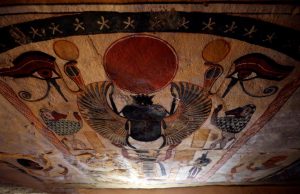
The Eighteenth Dynasty dates back to the 13th century B.C., a period noted for some of the most well-known Pharaohs, including Tutankhamen and Ramses II.
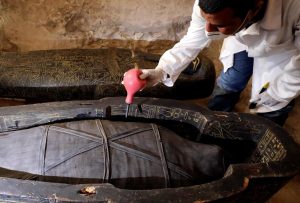
The tomb, located on the west bank of the Nile near the famed Valley of the Kings, was discovered by an Egyptian archaeological team that worked on the site since March, removing some 300 square meters of rubble to find it. Some of the tomb’s wall paintings depicting the tomb’s owner and his family were in “exceptionally” well-preserved condition, said the minister.
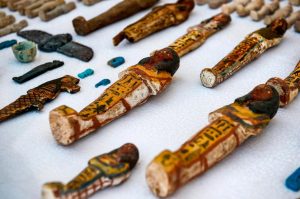
The ancient burial place contains two decorative sarcophagi, or coffins, along with some 1,000 funerary statuettes and other objects like coloured wooden masks and papyrus on which parts of the ancient Egyptian “Book of the Dead” were inscribed. The discovery of the tomb was announced in a ceremony in front of the temple of Queen Hatshepsu over the weekend in the southern Egyptian city of Luxor by Antiquities Minister Khaled el Anani.
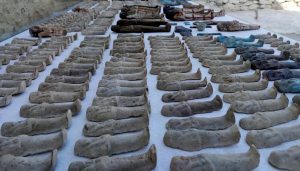
The two coffins contained mummies in a perfect condition, according to the minister.
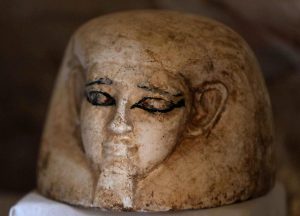
“One sarcophagus was rishi-style, which dates back to the 17th dynasty, while the other sarcophagus was from the 18th dynasty,” he said. “The two tombs were present with their mummies inside.”
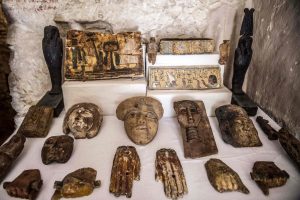
The Eighteenth Dynasty dates back to the 13th century B.C., a period noted for some of the most well-known Pharaohs, including Tutankhamen and Ramses II.
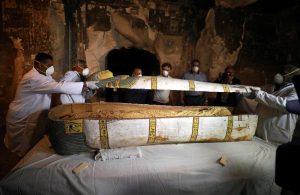
The tomb, located on the west bank of the Nile near the famed Valley of the Kings, was discovered by an Egyptian archaeological team that worked on the site since March, removing some 300 square meters of rubble to find it. Some of the tomb’s wall paintings depicting the tomb’s owner and his family were in “exceptionally” well-preserved condition, said the minister.
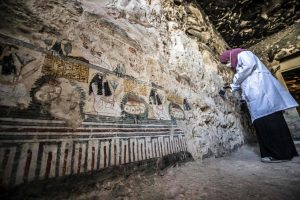
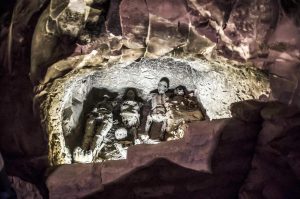
Source: thenational
Ask me anything
Explore related questions





